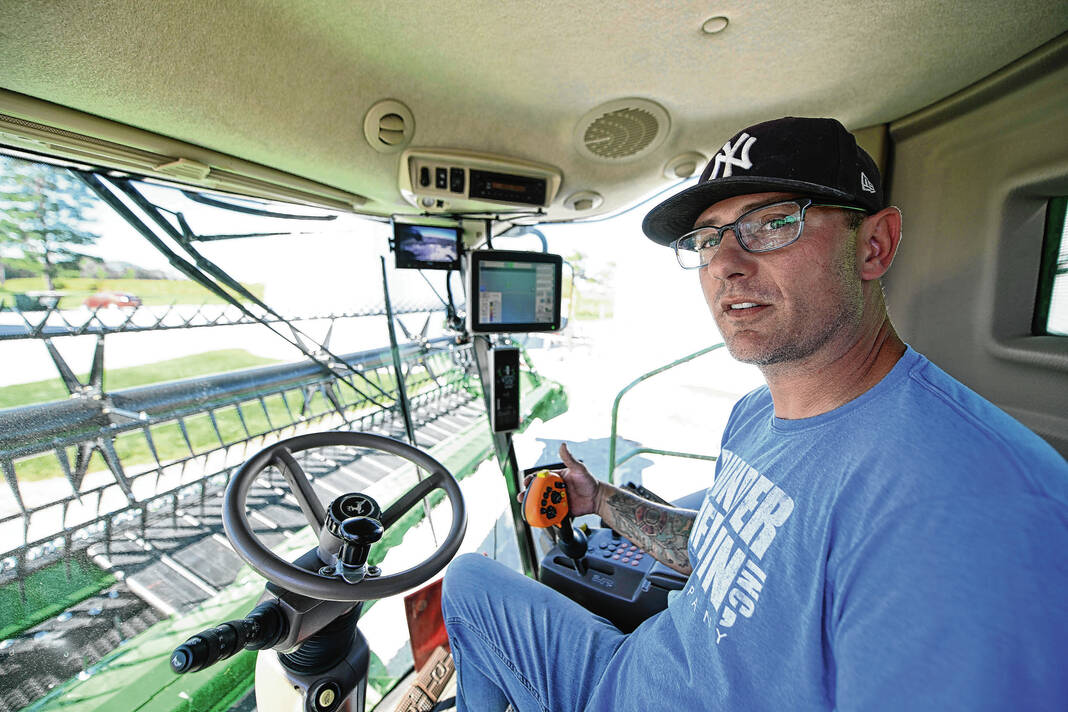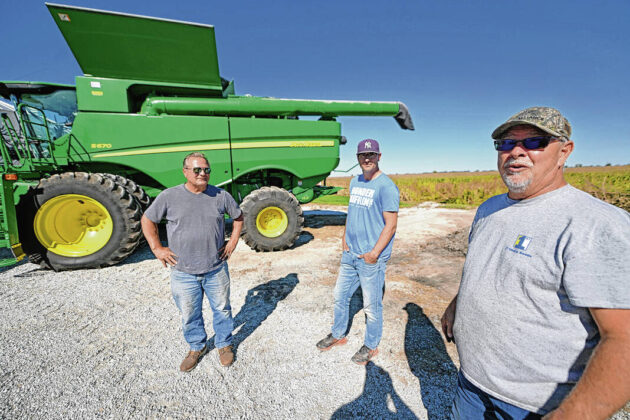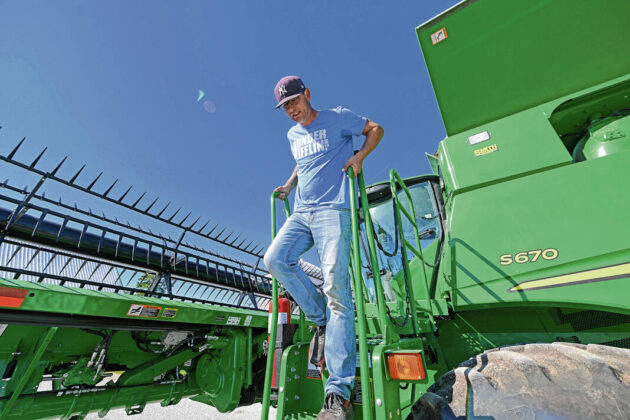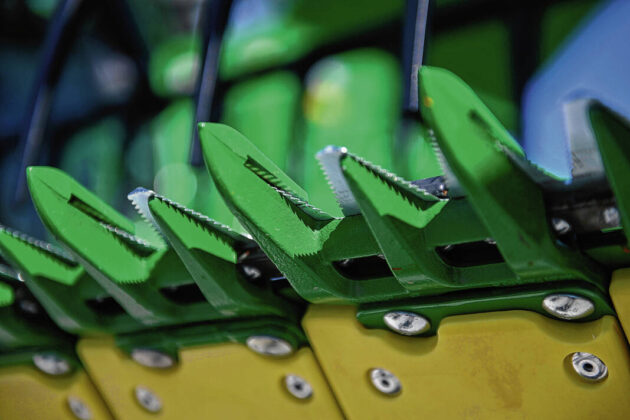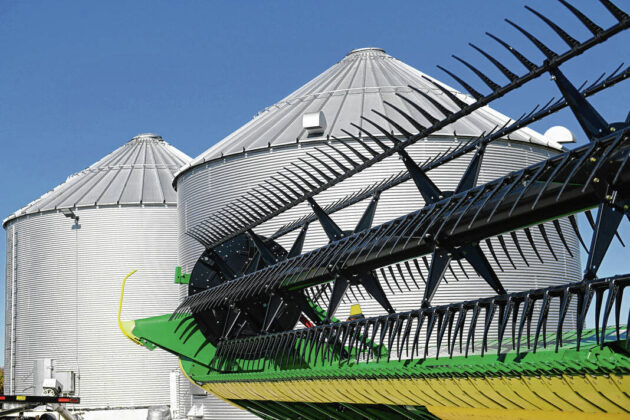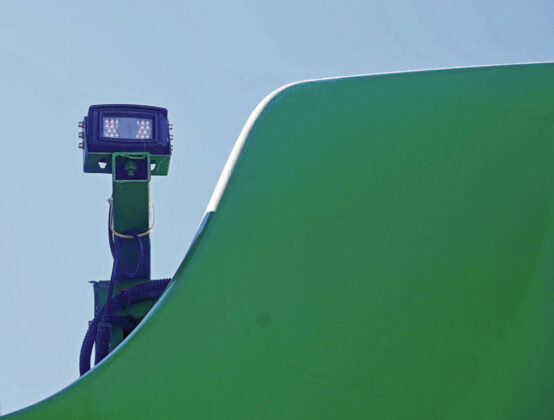HANCOCK COUNTY — October is a favorite month of the year for many, particularly in rural counties where Fall is at the forefront. While most folks are interested in getting out to travel to various festivals and see the turning leaves, this is also the time of the year farmers bring in their harvest using their massive equipment, combines and tractors — gear they must take out on area roads.
From the time they were small children, cousins Tom Tucker and Greg Kleiman have worked on their family farm in New Palestine. The two say this time of the year is their favorite as they reap what they’ve sowed.
“This is our money time,” Kleiman said.
However, they also know it can be a tough time for farmers who have to get out on county roads and share them with busy travelers. Their main message to people traveling through areas this harvest season over the next several weeks is to look out for farmers.
“Just be patient,” Kleiman said. “We’re just trying to get to the fields as fast as we can and we’ll always try to let the cars go around, but we need to wait until there are two or three drivers before we’ll get over.”
Purdue University’s Agricultural Safety and Health Program reported 20 work-related, on-farm deaths in the state of Indiana in 2021. As Hoosier farmers begin to harvest, program members remind farmers to keep safety a top priority, which includes drivers looking out for farmers as they maneuver combines weighing several tons to and from the fields.
Officials with Purdue University Extension noted back in 2020 that there are more than 1,000 farm vehicle crashes each year in the U.S. and 75% of those accidents result in injury, with a higher proportion of the injuries falling onto the driver of the non-farm vehicle.
Tucker agreed, asking motorist to simply slow down when they get close to farm equipment.
“If I’m in the road and I see someone coming too fast, I’ll stay in the road until they slow down and I can find a safe place to pull over,” Tucker said. “We prefer for drivers to let us stop (before) they do go around us because there is less chance of something bad happening if we’ve stopped.”
Greg Kleiman noted drivers can see a farmer on a combine or tractor far easier than they can see a car, even with the specialized video camera on the back of their combine.
The farmers note there is more traffic nowadays on county roads, and being mindful of the harvest season, slowing down and being respectful goes a long way in making sure everyone gets home safely.
“We are hopeful drivers will stay back when they see us so they are also able to see around us,” Kleiman said.
Indiana law says farm vehicles must have a Slow-Moving Vehicle (SMV) sign mounted 3 to 5 feet above the pavement and in the center of the load or as close as possible. Indiana does have a “slow poke rule” that applies to slow-moving vehicles. Indiana code states if farmers are driving a slow-moving vehicle and three or more vehicles get backed up behind them, it’s a farmer’s duty to pull over at the next possible safe place and allow them to pass.
Equipment built after July 1, 2006, must have reflectors and lights, according to requirements outlined in Indiana code. Reflective tape is not required, but it is recommended.
“All of our new stuff, it’s got flashers out the you-know-what, but when you’re up in that cab, even though we have mirrors all around and a back camera, it’s really hard to see everywhere,” Tucker said.
The men say they will more than likely start collecting their crops as soon as this week.
“We’re anxious to get going,” Tucker said.
Tucker has been farming full time since the late 1970s and Kleiman has been a full-time farmer since the late 1960s. Kleiman’s son, Nick Kleiman, who is also a full-time firefighter, works with the two men who have been farming together for years.
“The last thing we want to do is get in an accident and tear up our equipment at harvest time,” Nick Kleiman said.
While the farmers say they’ve been fortunate, noting most county drivers understand the work they’re doing, there have been encounters with drivers who refuse to use common sense when they approach massive farm equipment on the road.
“There have been a few fist shakes at others, but I don’t think I’ve ever had to get out and get in someone’s face or anything,” Tucker said. “People need to understand we’ve got our hands full driving a combine which can weigh as much as 25 tons.”
Some drivers are leery of trying to go around a combine. Drivers must also be mindful of the semi trucks they see on the side of the road used to haul the harvest.
“When we’re making a turn with them, people need to watch out and be careful when we’re driving those because we need a lot of space,” Greg Kleiman said.
Drivers need to be mindful of the semi trucks sitting on the side of the road during harvest as most times those have to be parked the wrong way and will be sitting on the side of the road.
Tucker pointed out the back of their combine is not something anyone would ever want to run into as it has a sharp end about vehicle windshield high.
“If you run into that at any speed, it’s not going to be good,” Tucker said.
Purdue University Extension officials note the law does not require a license to drive a tractor, and there is no minimum age requirement to do so. Even a child does not need a license to drive a tractor on an Indiana road, so vehicle drivers should be mindful.

